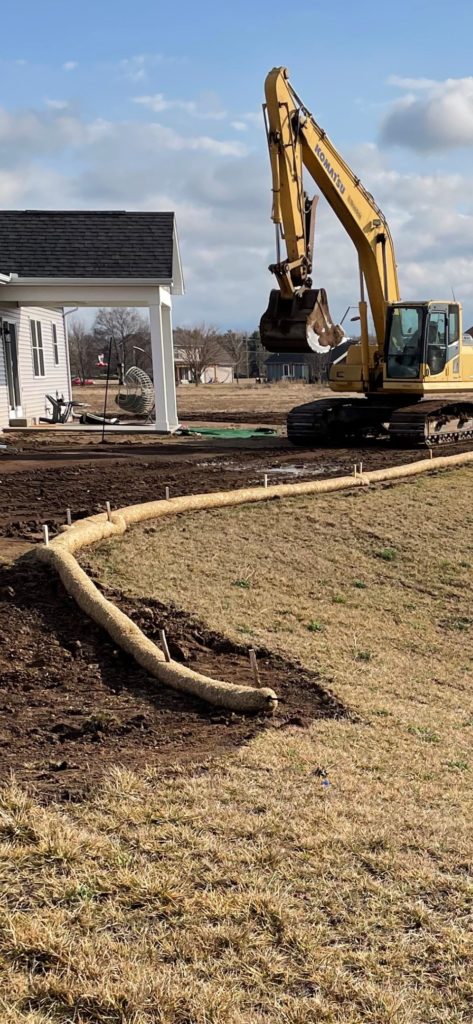Blogging BMP’s
A monthly Blog discussing the Best Management Practices (BMP’s) that must be used to aid in erosion and sediment control
Welcome back to another edition of Blogging BMP’s! I hope everyone has been taking advantage of the unseasonably warm temperatures we have been experiencing here in good old Elkhart County. I remember as a kid feeling so invigorated as the winter transitioned into spring and the first daffodils poked out of the ground to let us know that things are about to come back to life. Nowadays, I look for different cues to let me know spring has sprung and it is not as delicate as some blooming flowers, no, it is more like the sounds of tractors in the fields, back hoes in the ditches, and dozers at the jobsites. I still appreciate the small patches of flowers that pepper our landscape, but the adult in me knows it is time to work.
As construction has ramped up in the area, I can’t help but feel like something is different this year. There is a frantic pace that has accompanied the recent desire for families to re-connect with nature and hop in an RV or boat and head out where the restrictions of hotels and typical vacation destinations don’t apply. This is a great thing for our area as much of the economy thrives on manufacturing these exact items and the components that they are built with. Jobs are abundant and the pay is great, however, homes and apartments are not as abundant and we need places for all of these workers to live. So, what do we do? WE BUILD! Homes are being built faster than ever. Those empty lots at the end of the road in your neighborhood are now piles of dirt with new basements going in and stacks of lumber sitting next to them. This is great, right? The truth is, it is fantastic and terrible at the same time. Why it is fantastic is the easy one, but the terrible part might need some explanation.
As homes are put in, builders are expected to follow some rules set forth by the Indiana Department of Environmental Management or, as we in the business like to refer to it, IDEM. These guideline are not the exact same for every project, but most home sites, especially in neighborhoods, require some fairly common practices to prevent sediment from entering our stormwater systems and ultimately our waterways. I will not list them all, but here are the main items.
- Each home site should have a construstion entrance for vehicles going in and out of the jobsite. These stones help to remove sediment form the tires of the vehicles and equipment by creating a rough surface that will “scrub” the sediment off the tires before they enter the roadway. This is the only place the equipment should enter or exit the site.
- Any point where erosion may potentially leave the site should have some type of filter BMP that will allow water to go through, but not the sediment. The two most common are silt fence or straw wattles. These are highly effective but do require a fair amount of maintanence to keep them operating efficiently.
- The drains in the neiborhood streets should have some sort of inlet protection. The easiest to notice will be a fiber mat (usually coconut) that is installed on top of the grate, but basket filters are also common. These both need to be maintained as well as sediment collects in and around these filters and they need to be cleaned or replaced regularly.
- Each site should have some type of dumpster or trash containment to prevent items from blowing off the property.
There are several other BMPs that are required on individual building lots and a full list can be found by holding your smart phone’s camera over QR code 1 at the bottom of the page or by going to the following link https://www.epa.gov/sites/production/files/2015-12/documents/cgp_small_lot_swppp_brochure-508_0 If you have homes being built in your neighborhood and you feel like the builders are not following these guidlelines, please hold your smart phone’s camera over the second QR code 2 at the bottom or go to the following link https://www.elkcoswcd.org/homeowners/report-a-polluter/ and let us know so we may properly educate the builders on preventing sediment from leaving the building site. Until next time, keep the streets clean and the yards green!
